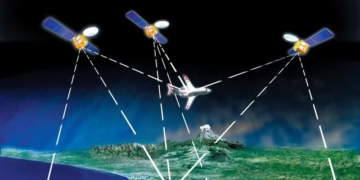The Earth – our planet, is different from what we see today; it began its life as a terrifying sphere that even the most gruesome scenes in movies cannot compare to. So, what has led to the life and civilization we know today?
With the modern model of the Solar System and the discovery of the oldest rock samples on Earth, which are over 4 billion years old (4.03 billion in Canada and 4.4 billion in Western-Central Australia), scientists today have concluded that Earth formed approximately 4.7 billion years ago, as a result of the gravitational accumulation of millions of large and small rocks, dust, and gas on a belt of material orbiting the Sun.
Initially, Earth was just a dead, scorching planet; heavy metals gradually sank in and melted, pushing lighter materials upward and cooling down. At this time, Earth appeared as a massive black sphere with bright cracks indicating molten material inside. These cracks would continue to exist for billions of years, often becoming the determining factor for the survival of life on the planet.
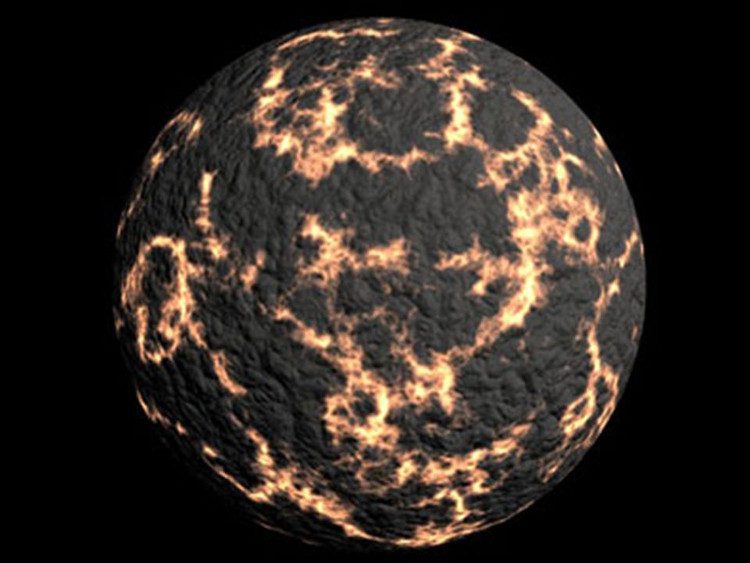
Initially, Earth was just a dead, scorching planet.
About 4.3 billion years ago, a planet the size of Mars named Theia (which formed during the early stages of the Solar System) headed towards Earth. The collision was a true disaster, but it also became a prerequisite for the life we have today. Firstly, it made the density of material on Earth more uniform, like shaking a jar filled with various candies at once. Next, it formed the Moon. Material from the surface of both planets was blasted into space, creating a belt of material moving in orbit around Earth, similar to the rings of Saturn and the large planets today. Gravity once again played the role of a creator, gathering the debris together to form the Moon.
At this time, the Moon was very close to Earth, and Earth was rotating very quickly. If things had continued like this, life would have found it hard to emerge. However, thanks to the presence of the Moon, Earth gradually slowed down its rotation due to gravitational influence, while centrifugal force pushed the Moon farther away, sparing us from tidal waves that would have been dozens of times more powerful than today’s most terrifying tsunamis. This period was around 4.1 billion years ago when oceans and an atmosphere (without oxygen) were beginning to form.
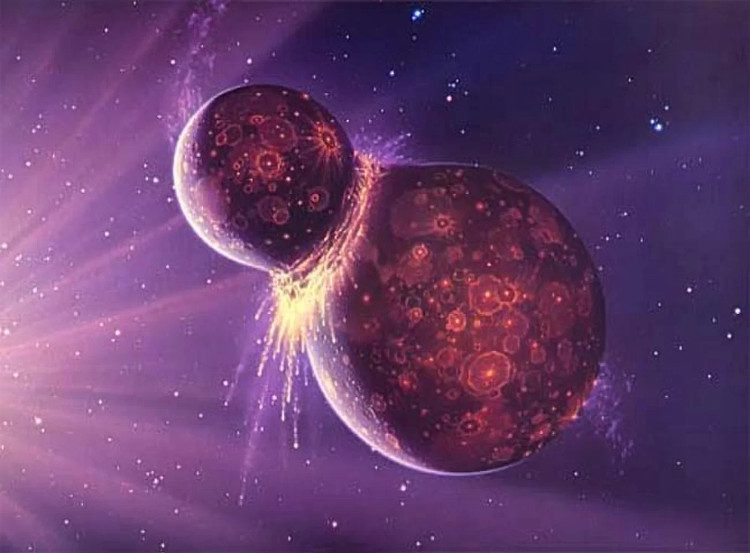
A planet the size of Mars named Theia (which formed during the early stages of the Solar System) collided with Earth.
About 4.1 to 3.8 billion years ago, Earth was filled with oceans as it cooled down, allowing liquid water to exist. Small asteroids and meteors continuously bombarded Earth; these were remnants from the early days of the Solar System. These meteors brought water-bearing crystals and some of the simplest organic compounds into the oceans, where life would eventually arise.
3.8 billion years ago, Earth entered the Archaean period. This was the mid-stage of the Precambrian era. From the first organic compounds introduced by the meteors that struck Earth, amino acids formed in the oceans, leading to the emergence of the simplest cells. Unlike us today, they were based on RNA (Ribonucleic Acid), as opposed to DNA (Deoxyribonucleic Acid), which makes up today’s plants and animals. Today, we have found fossils of the earliest life forms dating back 3.5 billion years. The first cells were unicellular organisms that gradually combined into thicker layers known as stromatolites, which were the first life forms to engage in photosynthesis, providing oxygen for our planet. The simplest glucose compounds (sugar) also formed.
3 billion years ago, the oceans were pumped full of oxygen; iron in the oceans was oxidized and sank deep to form iron ore, which our modern structures are made from today, sourced from this 3-billion-year-old ore.
2.5 billion years ago, the Proterozoic period began. This was the first developmental stage of primitive life forms on Earth, marking the end of the Precambrian. The first multicellular plants appeared around 1.2 billion years ago, with a more complex structure based on DNA rather than RNA as before.
However, the advancement of life did not last long before it was forced to halt. Time almost stood still as Earth entered the longest and most intense global freezing period in history. 850 million years ago, the excessively high density of oxygen in the atmosphere prevented the absorption of sunlight, causing Earth to cool down and gradually freeze. The more ice there was, the more sunlight was reflected back, as the entire planet acted like a giant mirror, absorbing no light at all.
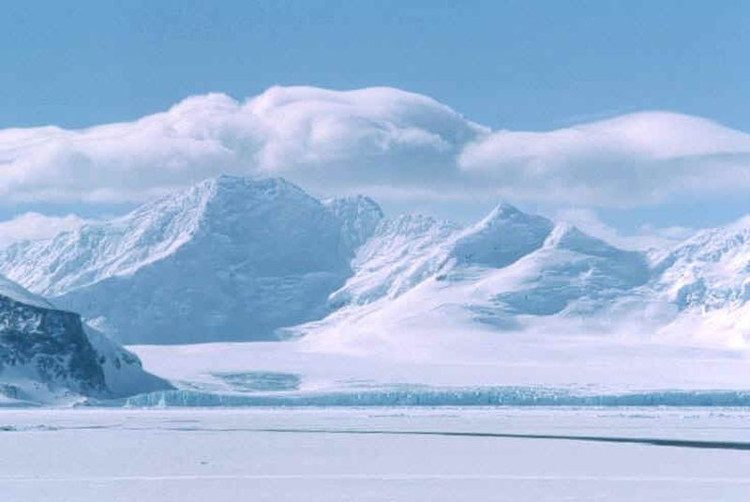
At that time, the Earth was a giant ice sphere, with no trace of life.
This period lasted for over 200 million years. We know that modern humans, with a history that seems very long, actually only appeared with true civilization and intelligence at the end of the Ice Age, around 15-20,000 years ago. While the entire freezing period lasted for over 200 million years. At that time, the Earth was a giant ice sphere, with no trace of life or warmth from the Sun; any rays of sunlight were reflected back into space.
630 million years ago, the source of molten lava within the Earth was awakened, becoming the savior for life on the planet. Volcanoes that had been dormant for hundreds of millions of years erupted, breaking through some freezing points on the Earth’s surface, spewing lava upwards, and most importantly, releasing carbon dioxide. As we know, carbon dioxide is the cause of the greenhouse effect, and at this time, it became a savior for life on Earth. The atmosphere absorbed the Sun’s heat, and with the volcanic eruptions melting the ice, the deepest forms of life in the oceans were given a chance to evolve. This melting process lasted for several million years.
580 million years ago, multicellular plants became quite common, marking the initial period for soft-bodied animals, with fossils of these soft-bodied animals dating to this time found today.
540 million years ago, oxygen continued to fill the atmosphere, and the upper layer of the atmosphere directly welcomed sunlight, forming a layer of ozone from oxygen, which blocked ultraviolet radiation from entering the atmosphere. This was crucial for life to invade the land (at this time, the first landmasses had appeared).
Around 530 million years ago, Earth entered the Paleozoic era, starting with the Cambrian period. This was a time of explosive biological development, lasting about 30 million years, known as the Cambrian explosion. Under the sea, more complex animal species emerged, the most notable of which were trilobites and their relatives. Furthermore, this was the first time that predatory animals appeared, species that directly attacked other species for food instead of feeding on small plants or floating carcasses. For example, in the image below, an Anomalocaris is preparing to attack its prey, a trilobite.
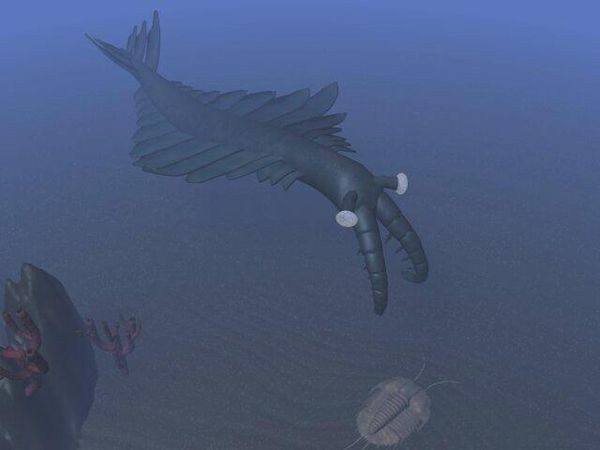
An Anomalocaris.
505 million years ago, the next phase of plant and animal development began, marking the second period of the Paleozoic, the Ordovician period. The oceans dominated the northern part of the Earth, while biological development focused on the southern continent known as Gondwana. This was a period of significant growth for soft-bodied organisms, especially the explosion of fish species. The first fish appeared and dominated the oceans from this time through the Silurian (440-410 million years ago) and Devonian (410-360 million years ago) periods.
The Devonian Period, 410 million years ago, saw a species of fish known as Tetrapods make contact with land, gradually using its fins to crawl ashore. After millions of years of evolution, they fully adapted to land, evolving into the first terrestrial animals, followed by the species Ichthyostega. This period also witnessed the development of insect species resembling those we see today, such as dragonflies and various arthropods, but at much larger sizes. Additionally, plant species grew to gigantic proportions, reaching heights of several meters due to the high oxygen levels in the atmosphere.
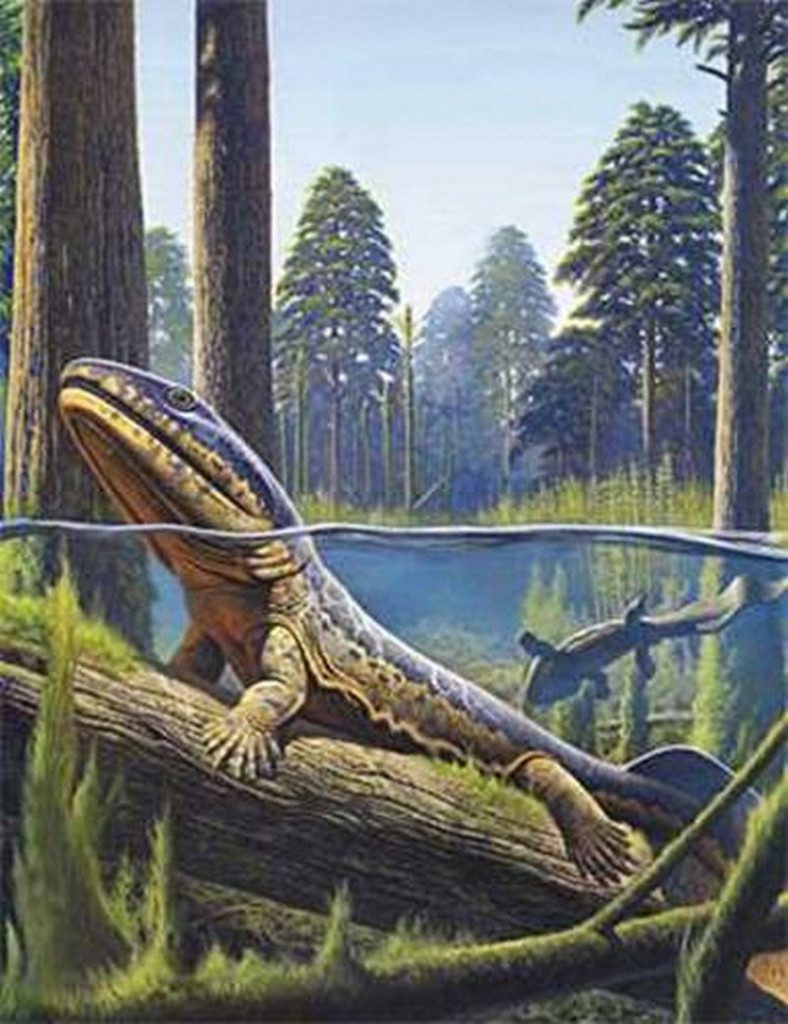
A species of fish known as Tetrapods.
From 360 million to 286 million years ago, during the Carboniferous Period (also known as the Coal Age), a series of plants died and became buried in the earth, forming today’s coal deposits. Most importantly, this was the era when animals began laying eggs on land. It is essential to note that prior to this Carboniferous phase, many animals, even those starting to conquer terrestrial environments like certain reptiles and amphibians, still laid their eggs in water to ensure sufficient moisture for the young to survive until hatching. However, during this period, reptiles evolved to lay eggs containing water that directly nourished the embryos. The two earliest ancestors of future reptiles are Hylonomus and Paleothyris.
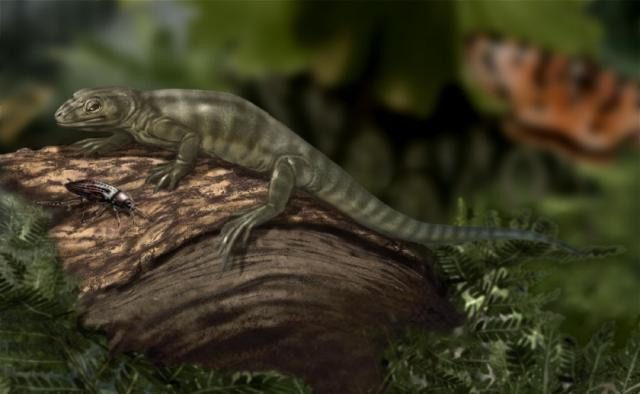
A Hylonomus.
As large trees died and formed coal, another generation of equally massive flora emerged, including moss clusters reaching heights of 30 meters, horsetails, and ferns exceeding 15 meters, which dominated the Gondwana continent.
From 286 to 248 million years ago, Earth entered the final phase of the Paleozoic Era, known as the Permian Period. This was a crucial time in the evolution of animals. Some reptiles evolved into early stages of mammals, such as the therapsids depicted below, which evolved from the Dimetrodon and had facial structures and teeth very similar to modern mammals. They were also among the most fearsome predators of the Permian era. However, it is regrettable that the evolution of mammals did not proceed smoothly; therapsids and many other animal species (mainly reptiles) of that time fell victim to the most catastrophic extinction event in Earth’s history: the Permian Extinction.
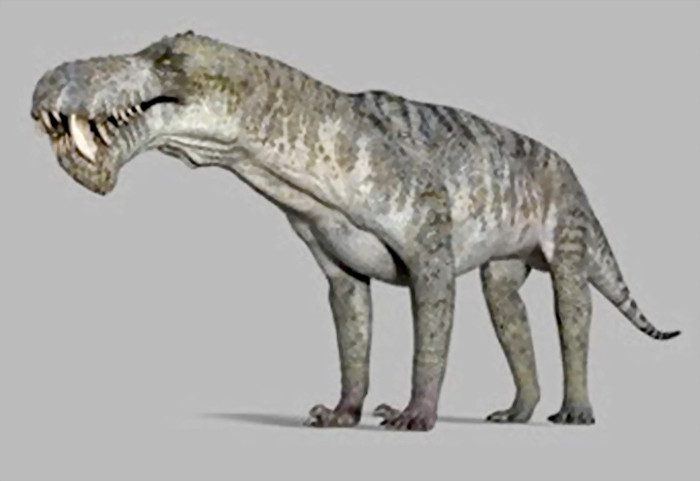
Therapsids.
To this day, there are still many differing opinions regarding the causes of this disaster, but most theories suggest that the mass extinction was triggered by the merging of the two continents, Laurasia and Gondwana, into the supercontinent Pangaea. The collision disrupted the terrains of both large continents, leading to earthquakes and volcanic eruptions on a continental scale that devastated life forms. However, the most severely affected were marine species, with up to 95% of species permanently disappearing after this extinction event.
This mass extinction marked the end of the Permian Period and ushered in the next era known as the Mesozoic Era.
248 million years ago marked the beginning of the Mesozoic Era, following the end of the great extinction. In both the ocean and on land, biodiversity began to change, but the natural conditions were no longer the same, allowing some species to adapt better than others, evolving into the dominant life forms on the planet. The first period of the Mesozoic is the Triassic Period (some Vietnamese sources often refer to it as the Tam Điệp Period), marking the start of what is known as the Age of Dinosaurs. This was the golden age of reptiles. The ancestors of mammals, such as the Cynodonts, continued to exist and laid the groundwork for the subsequent explosion of mammalian species, ultimately leading to our emergence.
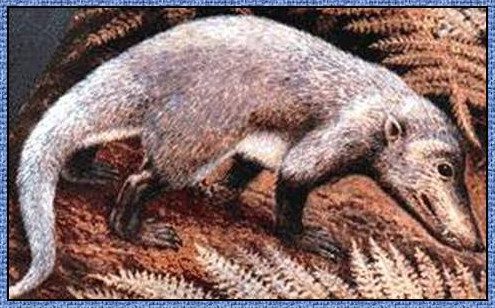
Cynodonts.
However, during the Triassic Period, mammals and even fish were significantly outmatched by the dominance of dinosaurs. They were ubiquitous in various sizes and forms. In the ocean, Ichthyosaurus and Nothosaurus ruled for a long time, while on land, dinosaurs thrived even more. They divided into three main groups: theropods (predatory species like T-rex, Coelophysis, and Allosaurus), sauropods consisting of long-necked dinosaurs like Apatosaurus and Mamenchisaurus, and finally the ornithischians which included species like Triceratops (the three-horned dinosaur), Stegosaurus (the armored dinosaur), and Iguanodon, as seen in Disney’s famous film “Dinosaur.” The image below depicts a T-rex (Tyrannosaurus Rex), the most famous predatory dinosaur of the Triassic Period.
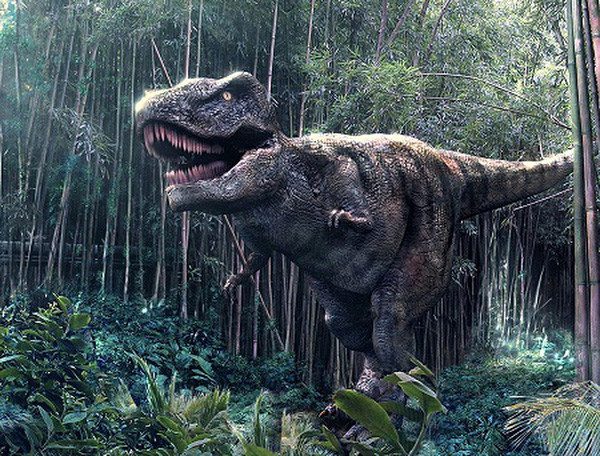
Tyrannosaurus Rex.
213 million years ago marked the start of the Jurassic Period. This was the middle phase of the Mesozoic Era. Pangaea once again fractured into Laurasia and Gondwana. At the fracture sites, there was a massive extinction event affecting numerous species, including plants, fish, and marine animals.
These remnants settled and formed today’s oil deposits, representing a significant point in Earth’s geological history and contributing substantially to our modern world.
Meanwhile, on land, reptiles continued to thrive. By the mid-Jurassic Period, they dominated the skies, land, and oceans, with the number of species greatly increasing compared to the Triassic. Under the ocean, plesiosaurs emerged and ruled the sea floor.

A Plesiosaur.
Meanwhile, the skies were dominated by pterosaurs, winged reptiles. However, they are not the ancestors of modern birds. Birds began to emerge during the Jurassic Period, evolving from a carnivorous dinosaur that developed feathers, bridging the gap between reptiles and birds. The Archaeopteryx is considered the ancestor of modern birds.
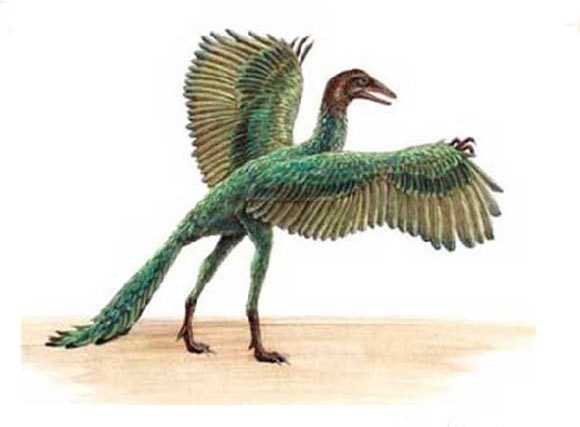
Archaeopteryx – the ancestor of modern birds.
Mammals during this period were small creatures, akin to today’s mice, living in hiding to evade predation by dinosaurs.
145 million years ago marked the onset of the Cretaceous Period (some Vietnamese sources often refer to it as the White Chalk Period), which is the final stage in the reign of the dinosaurs and also the last period of the Mesozoic Era.
The most notable aspect of this period was the emergence of flowering plants, pollinated by insects, replacing the older generation of primarily ferns and coniferous trees. Dinosaurs no longer flourished as they once did due to this shift in vegetation. Nevertheless, they remained the undefeated rulers until about 65 million years ago.
The majority of current theories lean toward the hypothesis of a catastrophic asteroid impact, supported by evidence of Iridium (a substance that could only come from outer space) dating back about 65 million years found in Central America, specifically in the Gulf of Mexico. This hypothesis suggests that an asteroid over 10 kilometers in diameter from the Solar System hurtled towards Earth. The massive impact created the present-day Gulf of Mexico and caused the largest tsunami and earthquakes in the entire Mesozoic Era.
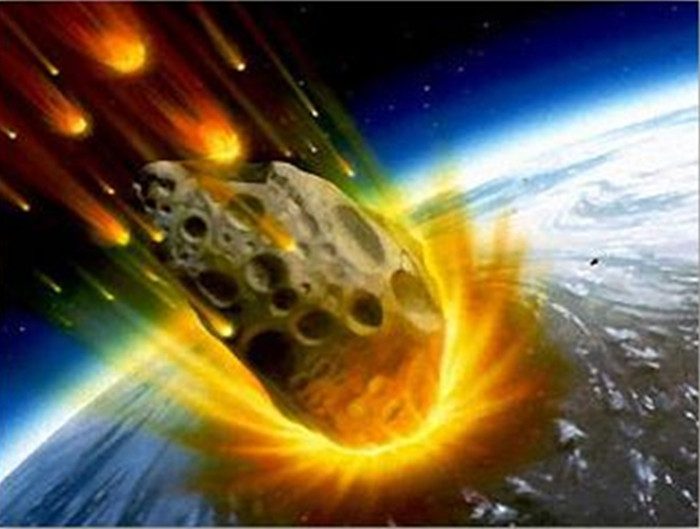
An asteroid over 10 kilometers in diameter from the Solar System hurtled towards Earth.
More importantly, it caused significant climatic shifts. Terrifying volcanic eruptions, along with meteorite impacts, killed off countless large animal species. Ash and soot from the eruptions and impacts obscured the sky, blocking sunlight from reaching the ground, leading to mass plant die-offs. The depletion of food sources, coupled with abrupt temperature changes, was the most critical factor leading to the extinction of the dinosaurs.
However, in terms of magnitude, this collision event cannot be compared to the Permian extinction. As a result, there are still small reptile species and birds that survived due to their lower food requirements and their ability to easily evade the impacts of the disaster. Most importantly, the ancestors of our mammalian species managed to survive through this catastrophe and progressed into the next phase of Earth’s history.
The Cenozoic Era
A world devoid of dinosaurs remained sparse for a long time, as birds had not yet flourished while mammals were accustomed to hiding in deep caves to avoid dinosaurs. It wasn’t until about 60 million years ago that mammals emerged onto the surface and evolved into various forms, ranging from predators to prey. During this period, they faced significant threats from gigantic carnivorous birds.
About 55 million years ago, at the end of the Paleocene (a part of the Cenozoic), primates began to appear in tropical and subtropical regions, exhibiting traits that allowed them to adapt to their environments: forelimbs (later becoming hands) with five fingers, including an opposable thumb for grasping and swinging between branches; a flexible neck that allowed observation from various angles… These were indeed the first ancestors of modern humans.
During the Eocene, immediately following the Paleocene, from 55 to 33.7 million years ago, the climate warmed, enabling tropical forests to expand from the equator while ice concentrated at the poles, particularly in Antarctica. This period saw the emergence of many plant species and animals similar to those we know today, notably hoofed animals and some primates that were closer to us.
Notably, during this time, two groups of hoofed animals emerged: Artiodactyla (ancestors of modern deer) and Perissodactyla (ancestors of horses and rhinoceroses), which were prevalent during this era. Horses at that time were relatively small, about the size of today’s small dogs. Over time, they gradually went extinct, leaving a few survivors that evolved into present-day horses, zebras, and rhinoceroses.
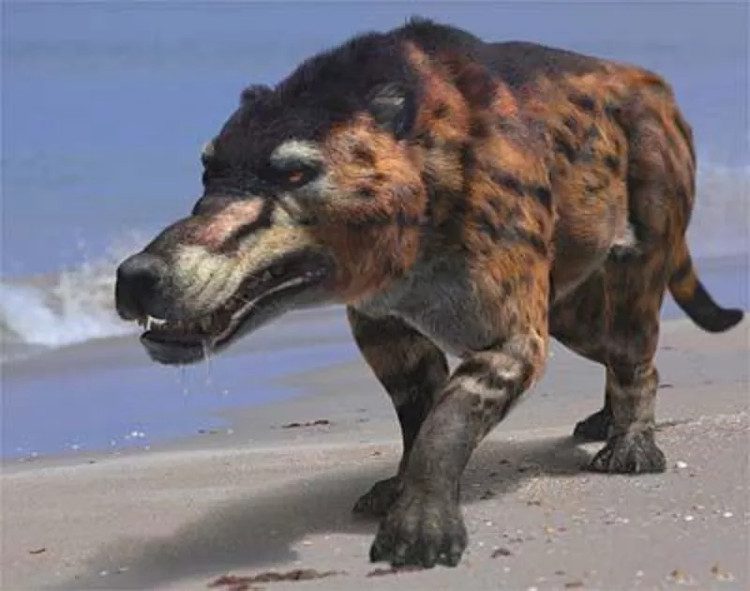
Mesonychids.
Another significant and important branch of animal evolution is the Mesonychids, resembling modern-day hyenas and dogs. They were the predators of over 30 million years ago. Due to their advantageous adaptation to aquatic environments, they left land and gradually evolved into the whales we see today.
The true close ancestors of humans only appeared about 3.7 million years ago; this is the farthest point at which we can trace the footprints of early hominins who could walk on two legs. This species was named Australopithecus and thrived in the forests of Africa. The desertification of this continent transformed forests into deserts or grasslands, eliminating trees for climbing. Consequently, Australopithecus began to evolve to adapt to living without tree canopies.
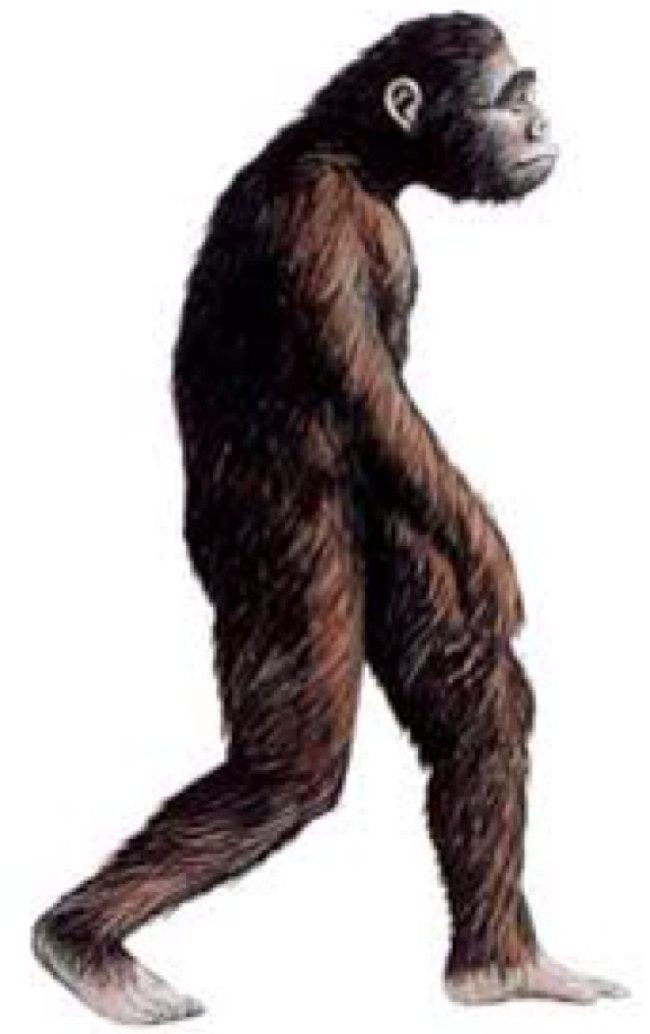
Australopithecus – close ancestors of humans.
Australopithecus later evolved into Homo habilis, which bore a closer resemblance to modern humans, and subsequently into Homo ergaster, then Homo erectus, who had less body hair, primarily on their heads, with bodily functions quite similar to those of present-day humans.
Homo erectus is considered the first humanoid ancestor of modern humans, with a brain size approximately 74% that of modern humans. This was around 1.8 million years ago.
It wasn’t until about 100,000 years ago that the intellectual human species truly emerged: the Homo sapiens. They represented the most advanced branch of intelligence among the evolving hominid genera. With the desertification of Africa, they crossed the boundary into Europe, spreading across both Europe and Asia (initially in the Middle East) and coexisting with strange animals of the Ice Age, such as Mammoths and other mammals that bore significant differences from today’s wildlife.
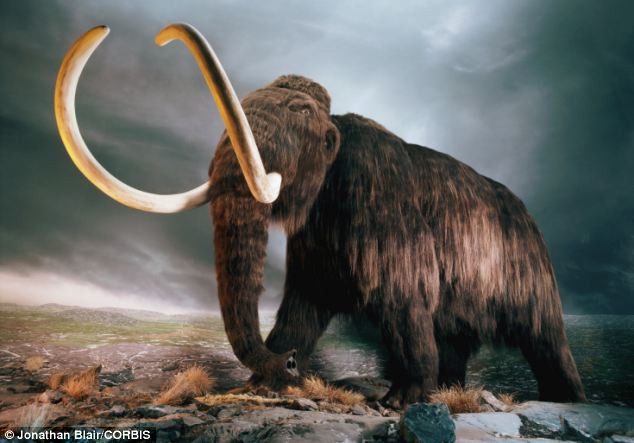
Mammoth.
As the Ice Age came to its conclusion around 12,000 years ago, humans truly entered their era, establishing social organizations that ranged from small to large, and from simple to complex. While dinosaurs were the dominant species on Earth for the longest time in the planet’s history, humans, in contrast, have only dominated it for a relatively short period, yet we have exhibited the most rapid development in population, social structures, and technological advancement. What we have today, including the words you are reading, is the result of this entire process!
Đặng Vũ Tuấn Sơn


















































